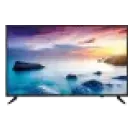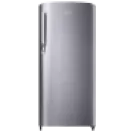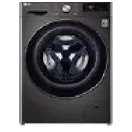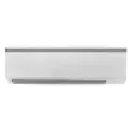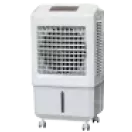When choosing an
inverter for your home, it is essential to understand the difference between sine wave and normal inverters. A sine wave inverter produces a smooth and consistent wave that mimics the power supplied by the grid, making it ideal for sensitive electronic devices like refrigerators, televisions, and computers. It ensures your appliances run efficiently and without noise or damage.
In contrast, a normal (square wave) inverter produces a less refined wave that is suitable for simpler devices, such as lights and fans. However, using this type with more complex appliances can result in reduced efficiency and potential damage over time. Although sine wave inverters are more expensive, their superior performance and compatibility make them a better long-term investment for modern households.
Sine wave vs normal inverter: Key points- Waveform quality: Sine wave inverters provide a smooth and consistent power output, while normal inverters produce a rough square wave, which can be harmful to sensitive appliances.
- Efficiency: Sine wave inverters are generally more efficient, allowing appliances to operate optimally without overheating or malfunctioning.
- Appliance compatibility: Use sine wave inverters for high-end electronics like computers and medical equipment. Normal inverters are suitable for basic devices like fans and bulbs.
- Cost: Sine wave inverters tend to be more expensive than normal inverters, but the investment pays off with better performance and longevity.
- Hybrid inverter option: Consider a hybrid inverter for flexibility, allowing integration with solar panels and batteries while providing sine wave output.
These factors are crucial in choosing the right
inverter for your needs.
Sine wave vs normal inverters: Feature comparison| Feature | Sine wave inverter | Normal inverter |
| Waveform output | Produces a pure sine wave, similar to the grid supply. | Outputs a square wave, with sharp changes in voltage. |
| Appliance compatibility | Ideal for all appliances, especially sensitive ones like computers, refrigerators, and microwaves. | Best suited for basic appliances such as lights and fans. |
| Efficiency | Highly efficient, allowing appliances to run smoothly without any humming noise. | Less efficient, can cause humming sounds in certain devices. |
| Cost | More expensive due to advanced technology and performance. | More affordable, suitable for budget-conscious buyers. |
| Power consumption | Consumes less power in the long run, ensuring energy efficiency. | May consume more power, leading to higher electricity bills. |
| Longevity | Offers longer lifespan for appliances as it delivers a steady power supply. | Can reduce the lifespan of sensitive devices due to inconsistent power output. |
A
sine wave inverter is perfect for protecting your devices and ensuring optimal performance, while a normal inverter is a cost-effective option for simpler requirements.
Updated price list of sine wave and normal inverters in India (2025)The updated price list for sine wave and normal inverters in India for 2025 reflects a range of options to fit various budgets and needs. From affordable models to high-end units, you can find detailed pricing information to make an informed choice.
| Model (Sine wave inverter) | Price |
| V-Guard prime 1150 1000VA/12V pure sine wave inverter | Rs. 6,199 |
| Livguard LGS1000I_IT 2072TT pure sine wave inverter | Rs. 20,799 |
| Livguard LGS1100I_IT 1578TT pure sine wave inverter | Rs. 21,198 |
| Luminous zolt 1100+LM18075 pure sine wave inverter | Rs. 31,890 |
| Model (Normal inverter) | Price (Rs.) |
| Exide magic 12V 825VA square wave inverter | Rs. 4,850 |
| Luminous eco watt plus 750 square wave inverter | Rs. 4,999 |
| Luminous eco watt plus 950i square wave inverter | Rs. 5,700 |
| Microtek EB1100 square wave inverter | Rs. 6,308 |
Disclaimer: The features, availability, and pricing of each model are subject to change and may vary. For the most accurate and up-to-date information, please visit the official website.
Head to your nearest Bajaj Finserv’s partner store to explore and choose from an extensive range of inverters. You can utilise a limit of up to Rs. 3 lakh to purchase your preferred model and repay the amount over flexible tenures ranging from 1 month to 60 months.
Sine wave vs normal inverters: Performance and benefits explainedSine wave inverters stand out for their superior performance, delivering a smooth, pure power supply that closely mimics the grid. This makes them ideal for running sensitive appliances like computers, TVs, and refrigerators without any risk of damage. They ensure energy efficiency and protect your devices from unwanted noise or overheating. On the other hand, normal inverters are a basic option, producing a square wave output suitable for simple appliances like lights and fans. While they are more affordable, they may cause a humming sound and can affect the longevity of sensitive devices. If you are looking for a reliable, energy-efficient power backup solution, a sine wave inverter is the better choice. However, if you need a budget-friendly option for basic needs, a normal inverter or even a
mini-inverter could be more practical.
Explore Sine wave and normal inverters on EMI with Bajaj FinservUncover a range of sine wave and normal inverters with easy EMI option on
Bajaj Mall. With Bajaj Finserv's financing options, you can enjoy easy payments and manage your budget effortlessly. Visit your nearest partner store to view the inverters and choose a plan that fits your needs, all with zero down payment options.
Benefits of shopping with Bajaj Finserv- Competitive prices: Bajaj Finserv’s partner stores bring attractive pricing options, ensuring your investment in a sine wave or normal inverter is cost-effective.
- Easy EMIs: Enjoy the convenience of flexible repayment with Bajaj Finserv's financing options. Select an appropriate tenure and pay for your inverter in budget-friendly EMIs.
- Zero down payment: Say goodbye to hefty upfront payments. With Bajaj Finserv, many inverter models are available with a zero down payment offer.
- Variety and accessibility: Bajaj Finserv's financing options provide access to a wide selection of inverters, available at partner stores across different cities.
- Exclusive deals and cashback: Opt for Bajaj Finserv's financing options to gain access to exciting discounts and cashback on sine wave and normal inverters.
- Free home delivery: Enjoy hassle-free shopping with select inverters delivered to your doorstep without any extra cost.
